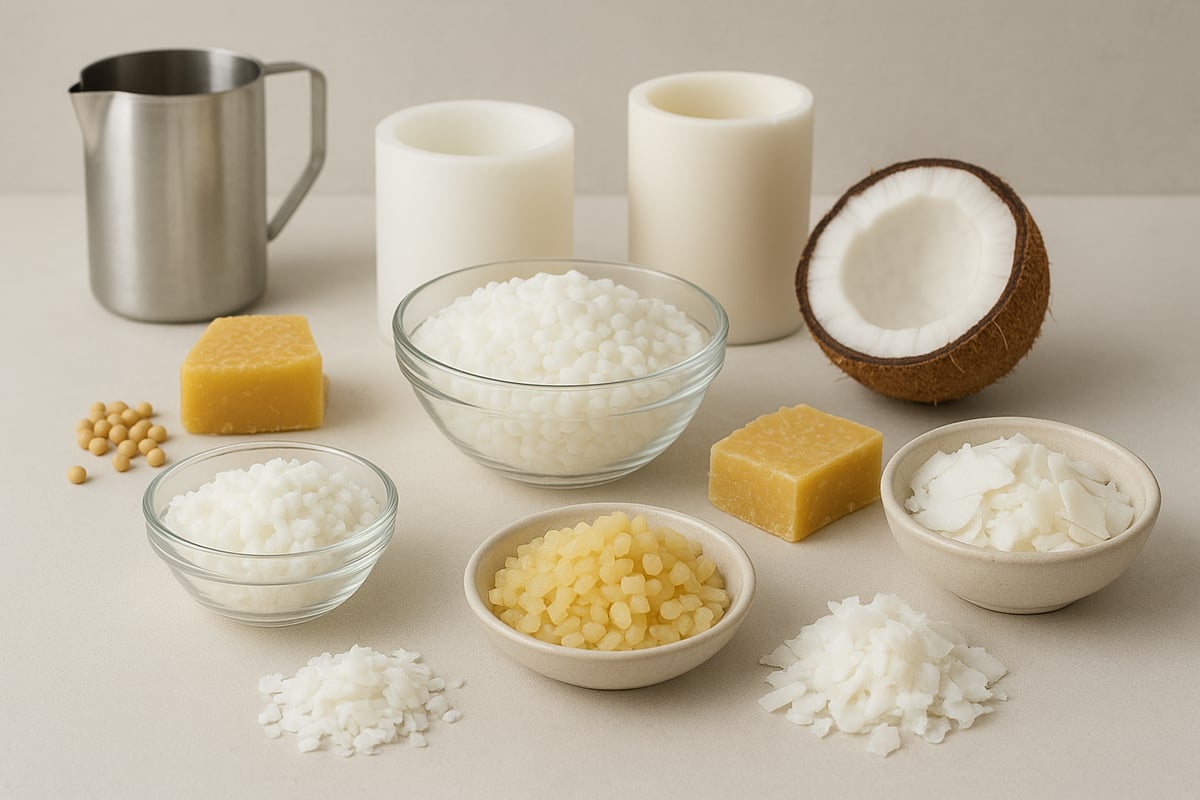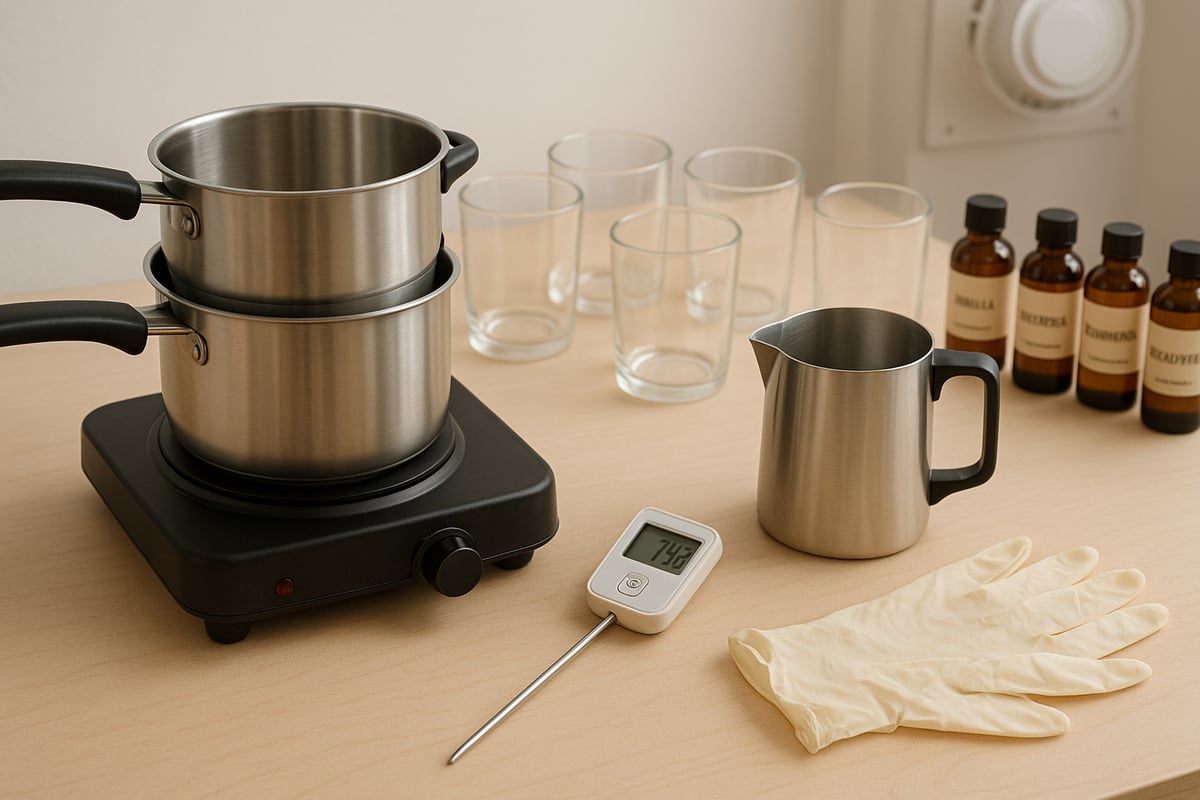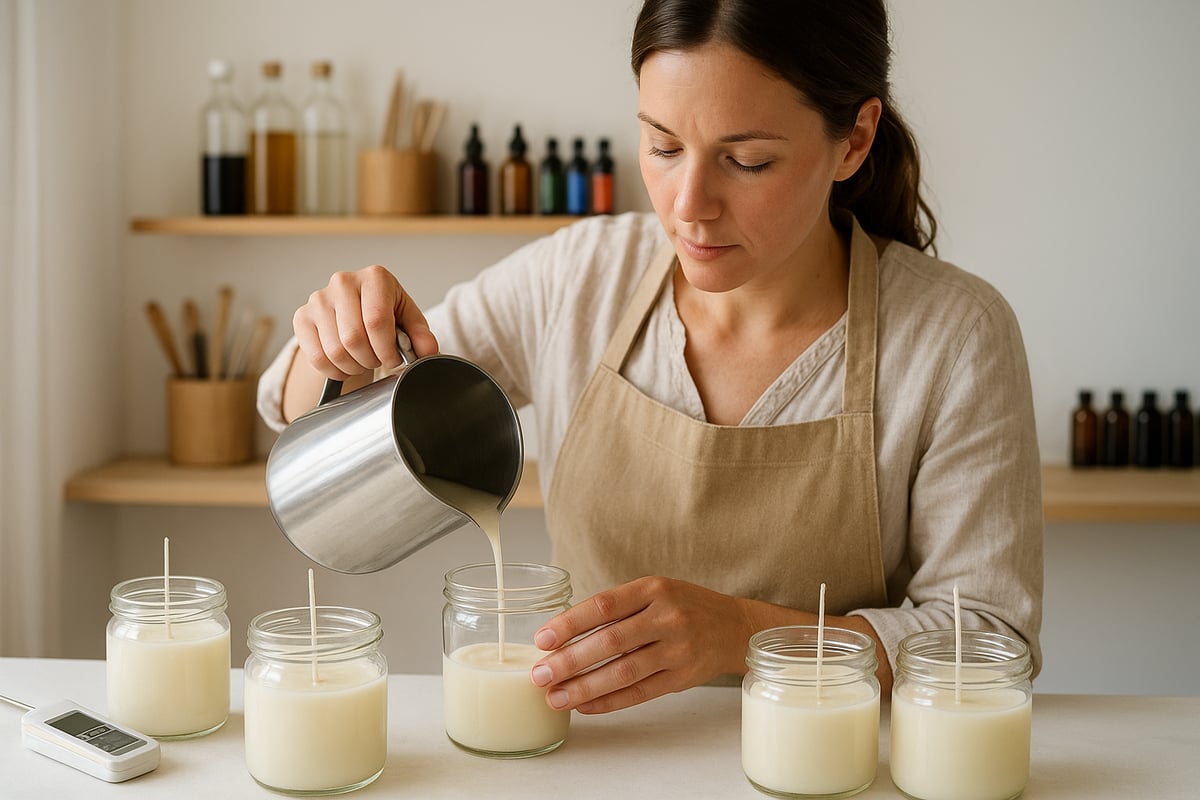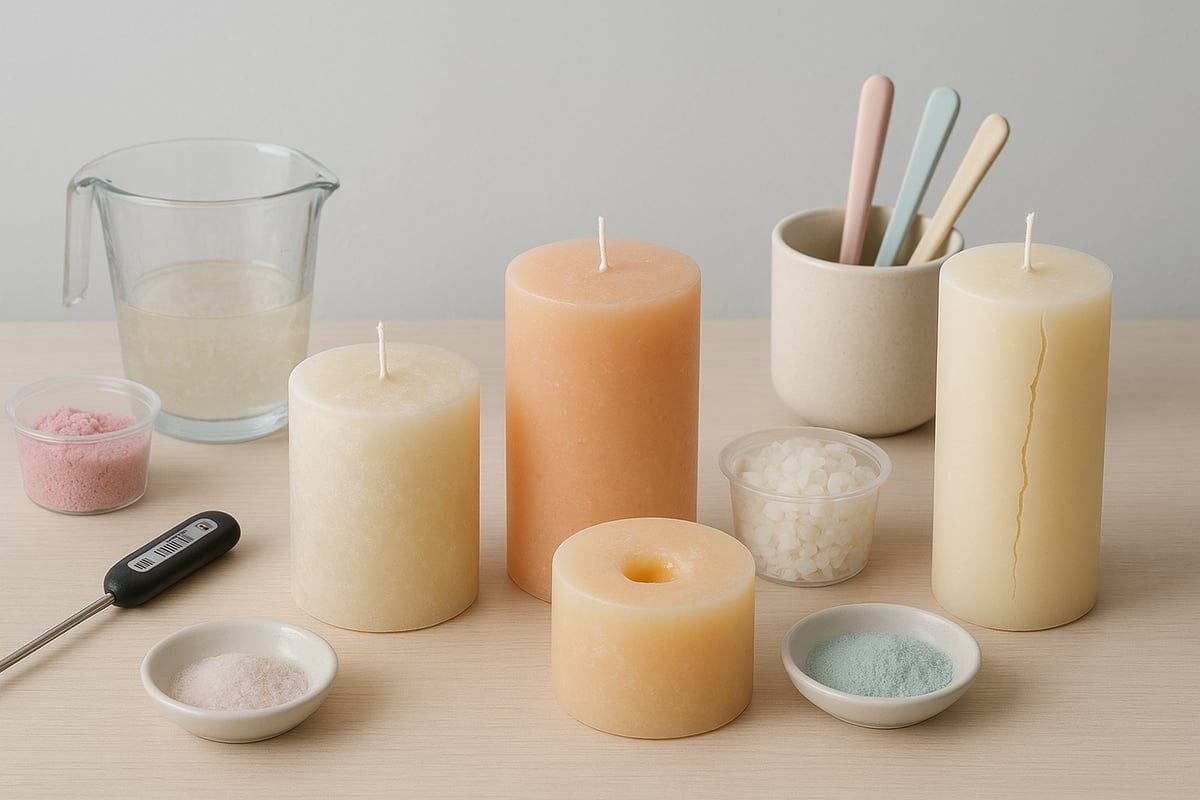
Pouring Wax Guide: Expert Tips and Techniques for 2025
Share
DIY candle making is exploding in 2025, with more creators than ever seeking to master pouring wax for truly custom results. From hobbyists to emerging small businesses, the quest for flawless, professional-looking candles is driving innovation and demand for expert knowledge.
But pouring wax isn’t always easy. Uneven surfaces, scent issues, and air bubbles can turn a creative session into a frustration. That’s why this guide delivers the latest tips, step-by-step techniques, and industry insights you need for success.
Ready for perfect pours every time? Dive in to learn about wax choices, workspace prep, advanced tricks, and troubleshooting—all in one place.
Understanding Wax Types and Their Impact on Pouring
The world of pouring wax is more diverse than ever in 2025. Soy, paraffin, beeswax, coconut, and innovative blends each bring unique qualities to candle making. For example, soy wax dominates the eco-friendly market, with over 60% of new brands choosing it for its sustainability and clean burn. If you want to dive deeper into the advantages of soy, check out the Pure Soy Wax Candle Benefits guide.
| Wax Type | Melting Point | Viscosity | Scent Throw | Best Use |
|---|---|---|---|---|
| Soy | Low | Smooth | Moderate | Containers |
| Paraffin | Variable | Thin | Strong | Pillars, Votives |
| Beeswax | High | Thick | Subtle | Decorative |
| Coconut | Low | Creamy | Mild | Luxury blends |
Each wax’s melting point and viscosity affect how you approach pouring wax. For instance, soy and coconut waxes are perfect for containers, while paraffin suits pillars and votives. Purity matters too; high-quality wax and the right additives can prevent issues like frosting or uneven surfaces.
Today’s consumers crave eco-friendly candles, pushing demand for plant-based and biodegradable options. When sourcing wax, look for reputable suppliers who guarantee consistent quality and transparent ingredient lists. This attention to detail ensures your pouring wax process results in beautiful, professional candles every time.

Prepping Your Workspace and Tools for Success
Setting up your workspace is the foundation for successful pouring wax projects. A well-prepared area ensures safety, efficiency, and the consistency needed for beautiful, professional candles.

Essential Tools and Workspace Setup
Before pouring wax, gather your must-have equipment:
- Double boiler or wax melter
- Accurate thermometer
- Heat-resistant pouring pitcher
- Candle molds or containers
- Protective gloves and goggles
Arrange tools on a stable, clutter-free surface with good ventilation. Keep a fire extinguisher nearby for added safety. Use a calibrated thermometer to monitor wax temperature precisely, as even slight fluctuations impact results. For step-by-step guidance on using these tools, check out the Product Use and Pouring Tips resource. This helps ensure every pouring wax session starts off right.
Cleanliness, Organization, and Maintenance
Prevent contamination by cleaning all tools before and after each pouring wax session. Organize ingredients and supplies within easy reach, labeling each container to avoid mix-ups. Wipe surfaces and utensils thoroughly to eliminate dust or leftover residue. Common setup mistakes, such as uneven tables, can cause lopsided pours or surface flaws. Maintain your gear between batches, and regularly inspect equipment for damage. A tidy, well-maintained workspace makes every pouring wax project smoother and more enjoyable.
Step-by-Step Wax Pouring Process
Perfecting your pouring wax technique transforms plain ingredients into beautiful, professional-quality candles. This process is part science, part art. Let’s break down each step for flawless results, whether you’re a beginner or aiming to master advanced candle making.

Measuring and Melting the Wax
Start by measuring your wax. Use a kitchen scale to match the wax weight to your container’s total volume, remembering that wax shrinks as it cools. For example, if your jar holds 8 oz, measure about 7 oz of wax.
Melt the wax using a double boiler for even heat. Soy and coconut waxes do best with gentle, indirect heat. Beeswax can handle a direct melt but watch closely to avoid scorching. Always use a thermometer to check the temperature. For most soy wax, aim for 170–180°F. Overheating can damage scent and texture.
A sample calculation for fragrance ratio:
Wax weight: 454g (1 lb)
Fragrance load: 8%
454g x 0.08 = 36g fragrance oil
For more on soy wax preparation, see this Homemade Soy Wax Candles Tutorial.
Adding Fragrance and Color
Timing is everything when adding fragrance or color to your pouring wax. Stir in fragrance oil once the wax cools to its optimal temperature, usually around 160°F for soy. This preserves scent strength and prevents evaporation.
Stick to safe usage rates, typically 6–10% fragrance by weight for soy. Overloading can cause separation or poor burning. When using dyes, add small amounts and mix thoroughly for even color. If you notice color fading, try more heat-stable dyes or add color at a slightly higher temperature.
Common issues like fragrance separation can be avoided by stirring for a full two minutes. For vibrant, consistent results, always blend thoroughly before pouring.
Pouring Techniques for Flawless Candles
Now for the key moment: pouring wax into your containers. Make sure your wax has cooled to the ideal pouring temperature—usually 120–140°F for soy. Pour slowly and steadily to avoid air bubbles.
Pre-warm your containers with a heat gun or warm towel to reduce the risk of sinkholes and cracking. For layered or multi-colored candles, let each layer set before adding the next. This technique creates beautiful designs and prevents colors from bleeding.
If you spot surface imperfections, gently reheat the top with a heat gun or pour a thin wax layer to smooth it out. Tracking your process helps you learn from mistakes and refine your pouring wax skills with each batch.
Troubleshooting Common Pouring Issues
Perfecting your pouring wax technique means knowing how to spot and fix the most common candle flaws. DIY makers in 2024 most frequently reported problems like frosting, sinkholes, wet spots, cracking, and uneven tops. Each issue stems from specific causes, often tied to temperature swings, rapid cooling, or improper workspace setup.
For example, frosting usually appears on soy candles when the wax cools too quickly or the temperature is off. Sinkholes and wet spots often result from pouring wax too hot or into a cold container. Cracking can occur if the room is too chilly or drafts hit the candle as it sets. Thankfully, these problems have fixes.
To prevent issues, always monitor your temperatures and pour steadily. If you spot a sinkhole, use a heat gun to even out the surface or top off with extra wax. Wet spots may fade with time, but warming your containers first helps. For persistent flaws, consider remelting and repouring, especially if the candle is unsellable. Tracking each batch and adjusting your process will boost consistency. For more troubleshooting and aftercare tips, the Candle Care 101 Guide is a great resource. With a bit of practice, your pouring wax results will soon look and perform like those from professional candle makers.

Advanced Tips and Innovative Techniques for 2025
Ready to take your pouring wax skills to the next level? In 2025, candle creators are pushing boundaries with bold new ideas and advanced methods.
Experimenting with swirls, embeds, and layered scents can transform ordinary candles into true works of art. Swirling two or more colors creates mesmerizing effects, while embeds like dried flowers and crystals add unique textures. Layering different scents in a single candle is trending, making each burn a new experience for your customers.
New technology is making pouring wax even more precise. Digital thermometers with app integration let you monitor temperatures in real-time, ensuring accuracy for every batch. Precision pour spouts help control the wax flow, reducing spills and air bubbles. These tools are quickly becoming must-haves for serious candle makers.
Eco-conscious innovation is at the forefront. Plant-based dyes and biodegradable additives are popular among makers who want to minimize their environmental impact. According to the 2025 Candle Making Supplies Market Insights, demand for sustainable supplies is higher than ever, fueling the rise of green candle brands.
For small businesses, scaling up requires smart testing and perfecting of new pouring wax methods. Batch testing, creative mold choices, and ongoing learning keep your products ahead of the curve. As highlighted in the Growth Trends in the $18+ Billion Candle Market, unique designs and luxury finishes are what set successful brands apart.
Stay curious, keep experimenting, and let your pouring wax creativity shine in 2025.
Safety, Storage, and Quality Control
Prioritizing safety is essential when pouring wax. Always wear protective gloves and eyewear, and keep your workspace well-ventilated. Use a thermometer to monitor temperatures and prevent burns or overheating.
Store finished candles and leftover wax in a cool, dry place, away from direct sunlight. This helps maintain scent, color, and texture. Label each batch with the date and ingredients for easy tracking.
Quality control matters for every candle maker. Inspect each candle for smooth tops, even color, and a strong scent throw. Run burn tests to ensure a steady, clean flame.
For small businesses, keeping a detailed log of each pouring wax batch helps identify trends and prevent repeat mistakes. Many leading makers also perform random checks and maintain compliance with legal labeling requirements, as highlighted in recent Candle Market Size, Share & Forecast Report insights. Consistent quality builds trust and keeps customers coming back.
Ready to turn all these expert tips into your own nature-inspired creations? Whether you’re just starting out or leveling up your candle-making game, there’s nothing like working with high-quality, sustainable materials that capture the wild beauty of America’s parks and cities. Imagine how your candles could look and smell with the right wax, the perfect pour, and those small details that make every light unique. If you’re itching to create something special, here’s a little boost for your journey—save 15% on your first order at The Roosevelts Candle Co. and let your creativity shine: Save 15% on Your First Order
